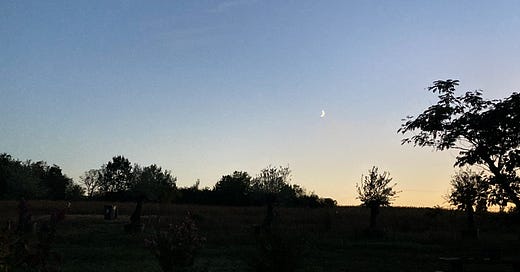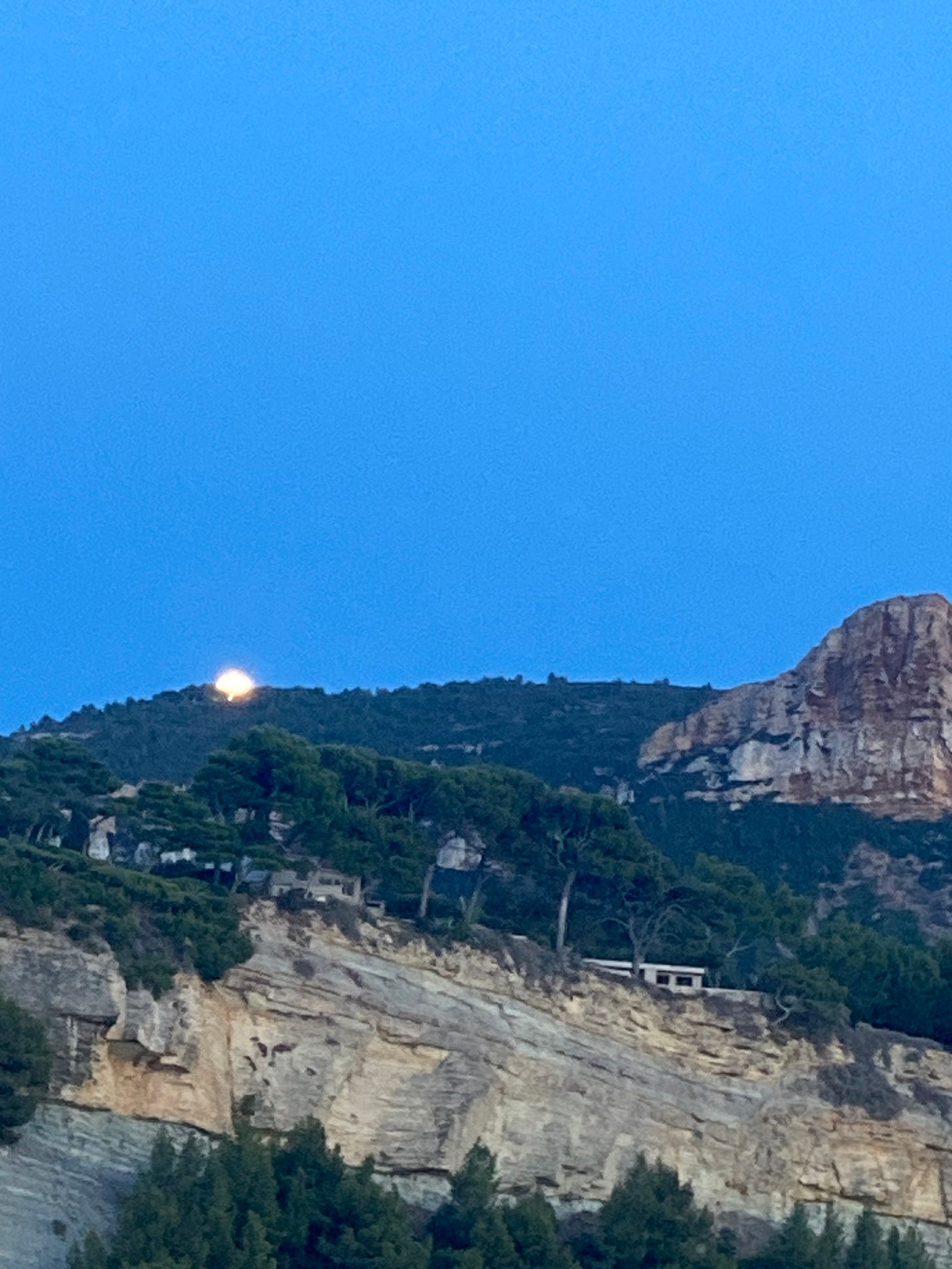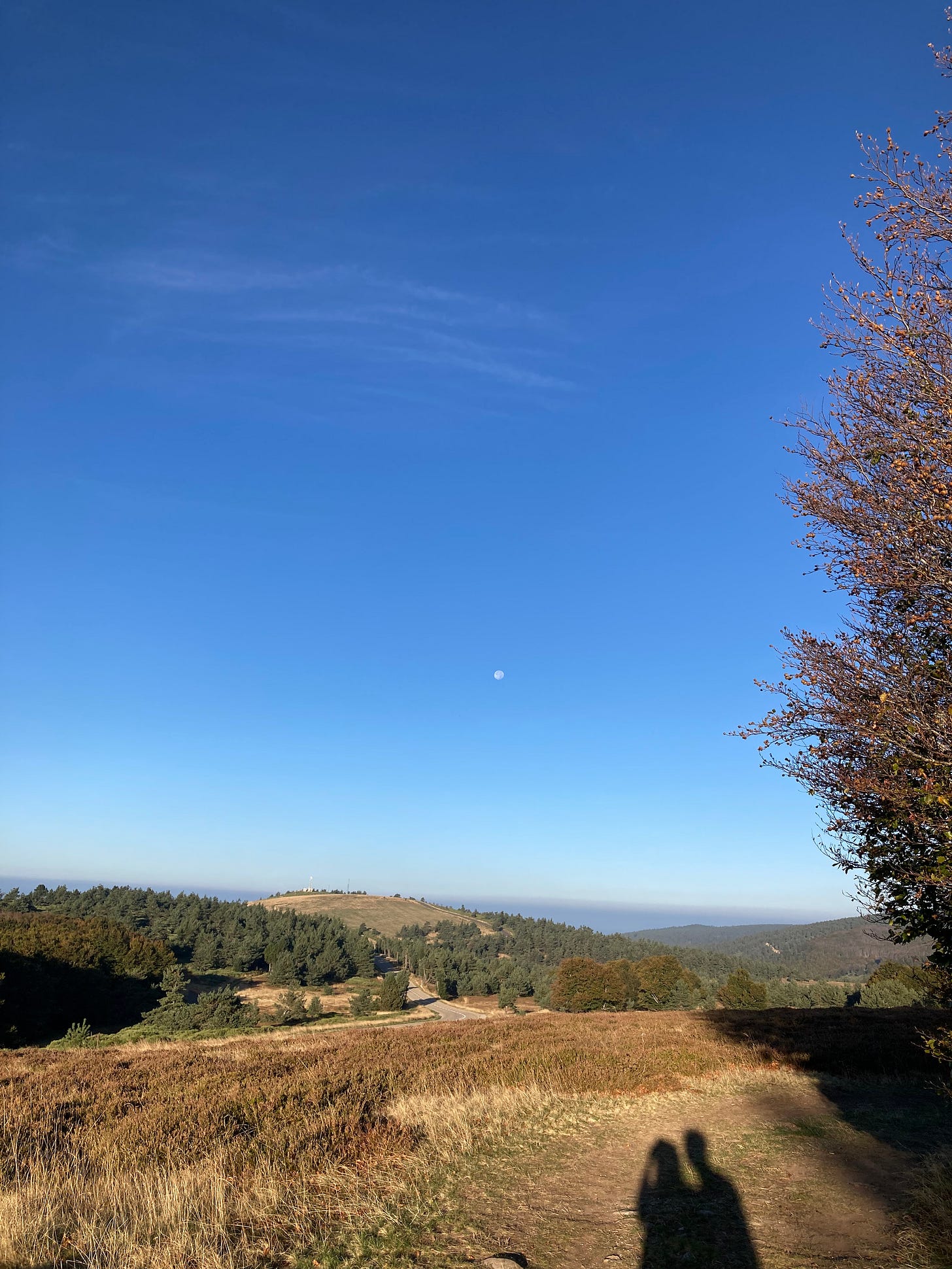My last newsletter ended in the Dordogne where we had parked up for the week in my mum’s driveway.
Our journey up until that point had been both very hot and very rainy, and it was only when we settled for a few days that we looked up and saw the stars. Even on the gloomy days, the nights were clear and crisp, and the Milky Way shone so brightly that we would stand outside getting devoured by mozzies just to look at it a little longer.
To begin with, it was disorientating. So much to look at and so little we could recognise. I knew the Big Dipper, the tail end of Ursa Major, but apart from that it was hard to get our bearings. So we got an app to help us get better acquainted with this sky that we’d lived beneath all our lives.
We discovered that if you look straight up, you’ll see the night’s brightest star — Vega, second only to our very own Sun. Saturn and Jupiter made themselves nice and obvious too, big and bright and in a hurry across the sky compared to the slower stroll of the stars around them.
Turn around and you’ll see a star that looks a little lonely — Polaris, the North Star. The very same one that the Three Wise Kings followed to Bethlehem, and which, while it looks alone, is actually the tail of Ursa Minor, the smaller and more elusive of the Dippers.
There was Casseopea — a crooked W of a constellation that always stood out to me despite constantly forgetting its name. Cygnus formed the shape of a swan, swooping through the sky with its long neck and wide wingspan. And when I woke up in the early hours one morning, who was out my window but Orien and his shining belt?
Queen of the sky though, was always the Moon, poking her head through the trees or over a cliffside and moving swiftly upwards to light our faces. She waxed as our onward journey began, filled to the brim as we got to the Med, and waned as we flew home last Wednesday night. But in every shape and at every angle, she was always a dream to behold.
There is a lot of Astrology talk these days, but for some reason, those stars and signs and planetary movements feel different — less real, more abstract, more interpretive. These new friends of ours were right there with us each night, whether we were on a beach in Cassis, an Ardèche mountaintop, or walking back to the van after a night in St Etienne. There they all were without fail, winking at us from their far-off homes in the sky.
I was worried that when we got back to London, we wouldn’t be able to see them anymore — and granted, I haven’t seen the moon in days now. But as I walked home from the tube the other night, I was surprised to look up and see a few familiar faces. Not as bright as they had been in the wilds of France, but still unmistakably there.
I’ve been feeling a little unsettled lately. Work is unpredictable, money is elusive, and life right now is full of adventures that both fill me with joy and have me yearning for stillness and routine. So, looking up at a sky that holds humanity's most ancient stories, that has guided the generations, and that still lights up each night has been really quite calming. There’s a familiarity, a belonging, a reassurance that I’m not lost — I’m just making my way!
See you in the next one,
Annabel x









